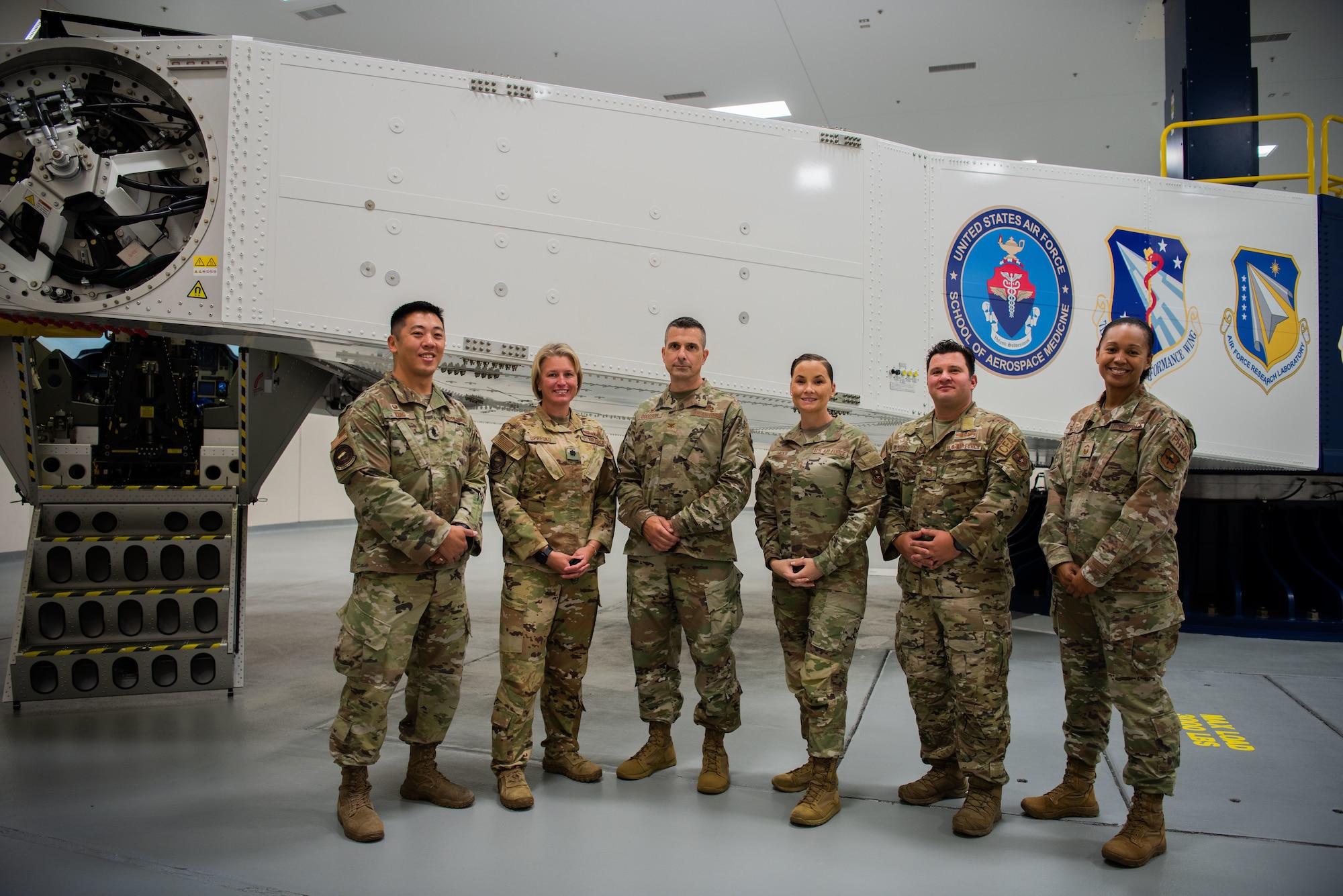37th TRW Supports Aerospace Physiology Training Program > 37th Training Wing > Article Display
WRIGHT PATTERSON AIR FORCE BASE, Ohio – The 37th Training Wing assumed responsibility for the 344th Training Squadron Detachment 2 on August 25, after an official transfer authority from the 711th Human Performance Wing.
Specifically, the 37th Training Group, headquartered at Joint Base San Antonio-Lackland, Texas, will execute the technical training mission.
Detachment 2 has three missions:
– Provide Air Force Specialty Code courses – meaning this is a formal technical school for aerospace physiology officers and technicians.
– Provide acceleration training to all fighter crews.
– Provide initial and refresher training in aerospace physiology to all crews, whether enlisted or officers.
The detachment provides training to 68 agencies, 24 states and 40 countries, averaging approximately 2,100 students each year. Students include prior and non-prior service, Air National Guard, Air Force Reserve, Department of Defense civilians, and international students.
Training spans classroom academics and hands-on training with two training altitude chambers, the Department of Defense’s only centrifuge, and a reduced oxygen breathing apparatus. The centrifuge serves two purposes – testing the ability of future fighter crews to withstand high gravitational forces and researching the effect of high gravitational force on human physiology, with the research mission accomplished by the 711th HPW.
“It was an exceptional day for the Gateway Wing and the 37th Training Group because our family of Airmen is growing again,” said Col. John Goodson III, commander of the 37th TRG. “The Gateway Wing, led by my Chief, Colonel Lauren Courchaine, is truly a phenomenal and one-of-a-kind wing. We’re a training machine and that’s why we’re a perfect match for Det 2, their fantastic team and unique training mission which focuses on the stress that modern aviation places on the human body.
Historically, administrative and operational control of the career field of aerospace physiology rested with the Air Force Surgeon General. In the late 1990s, it was determined that aircrew training could not be funded from Defense Health Program funds. Eventually, the funds needed to run the training programs were transferred to the Air Force Operations Directorate. However, staff recruitment and development remained the responsibility of the AF/SG.
According to Lt. Col. Christianne Opresko, commander of 344th TRS Detachment 2, in 2007 an Air Force Smart Operation for the 21st Century event recognized many programmatic disconnects associated with the aerospace physiology enterprise .
“Between 2007 and 2017, there was an increase in flight physiological events in various tactical aircraft,” Opresko said. “In response, Congress directed a look at how the Air Force trains aircrew, as well as how the Air Force acquires its aircraft systems for use. This led to the formation of the Air Force Physiological Events Action Team.
AFPEAT and the Aerospace Physiology Enterprise had three recommendations:
– Consolidate remaining Aerospace Physiology program funding from AF/SG funding to Air Force Operations Directorate funding, specifically to recruit, access and develop people.
– Properly align the Aerospace Physiology business with the requirements owner (Directorate of Air Force Operations).
– Increase knowledge of respiratory systems and aircrew performance in aerospace physiology by integrating aerospace physiology personnel into direct weapon systems support roles.
On June 17, 2021, Acting Secretary of the Air Force John Roth and Air Force Chief of Staff Gen. Charles Q. Brown, Jr. signed a directive program action plan with the following objectives:
– Consolidate the aerospace physiology enterprise under Air Force Operations Directorate funding.
– Realign personnel and organization entities with the requirement.
– Correct the lack of expertise identified by AFPEAT.
– Transitional Aerospace Physiology Officer and enlisted personnel in the new line of Air Force AFSCs.
Additionally, the PAD directed the Air Education and Training Command, in conjunction with Medical Career Field Managers, to entrust the AETC with the formal training requirements of the U.S. Air Force School of Aerospace Medicine, 711th HPW.
This is the second aerospace physiology training program that falls under the AETC, the other being located at JBSA-Randolph, Texas under the 12th Operations Support Squadron.
The 37th Training Group has four geographically separated units which are located at Fort Leonard Wood, Missouri; Fort Lee, Virginia; Wright Patterson Air Force Base, Ohio; and Port Hueneme, California. The group is responsible for training 25 enlisted officers and AFSCs and teaching more than 130 courses.


Comments are closed.